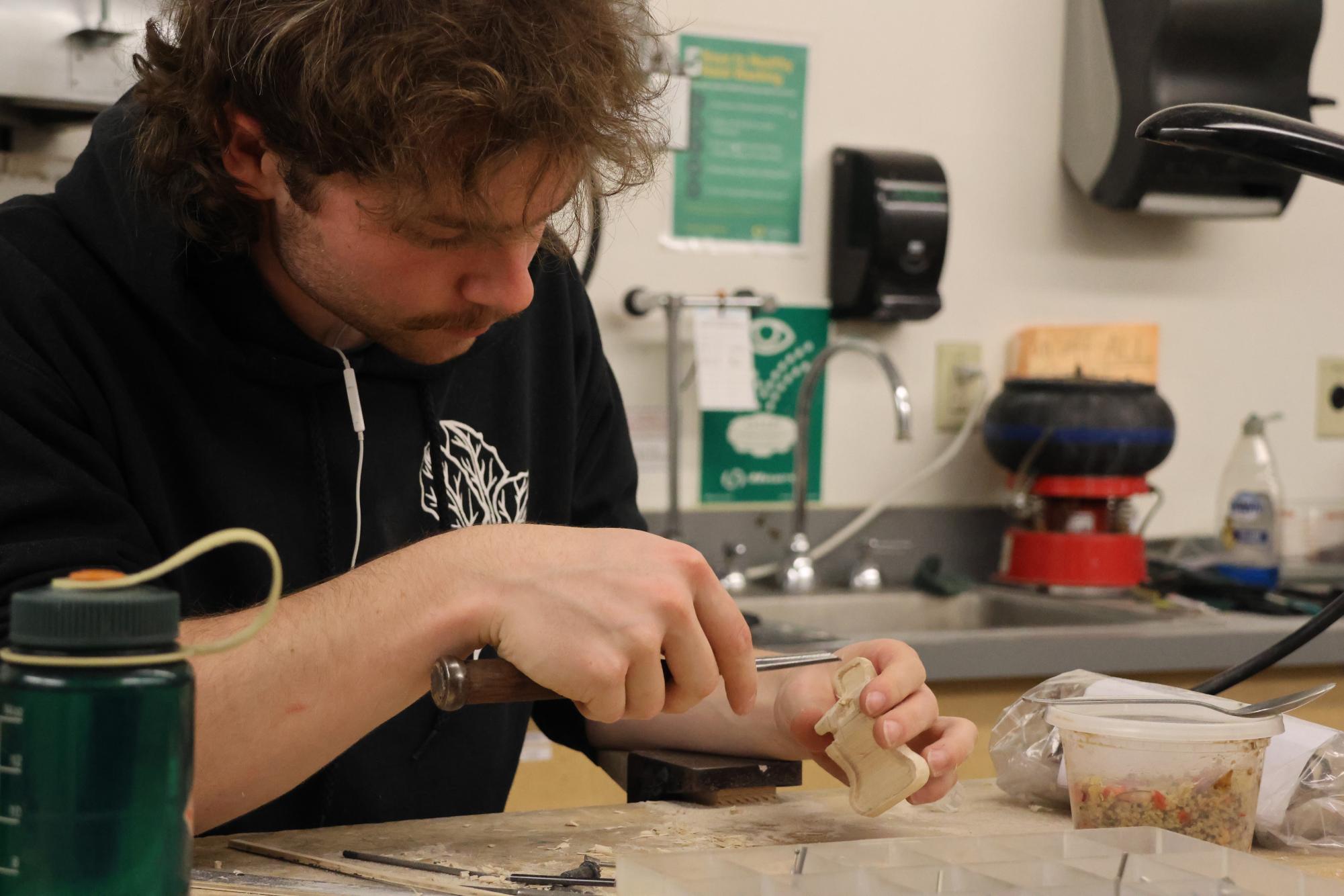In elementary school, my favorite time of the day was art class. Each week, my classmates and I would be corralled into two snaking lines and shepherded down the hallways, our sneakers squeaking on the linoleum as we filed into the art classroom.
Passing through that hallowed door was like entering fairyland. Smudgy charcoal sketches papered the walls from floor to ceiling. Knickknacks lined every shelf: vases full of plastic flowers, artist mannequins mid-arabesque, cakes of muddy watercolors. Even the chairs were painted into the fantastical forms of dragons, castles or allusions to Andy Warhol’s pop-art.
For many students, the art classroom was a safe haven. Even those of us who didn’t particularly enjoy sculpting pinch-pots could appreciate the refuge it offered — art was a break from the math, reading and writing that occupied the rest of our day. It allowed us to unwind and think creatively.
Studies show that art is beneficial for elementary school students, both improving the school environment and giving students more confidence, but what about college students?
For those of us venturing into adulthood, avenues of creative expression are just as crucial as ever.
College is stressful, and navigating adult responsibilities even moreso. In the everyday frenzy of school and work, it is easy to become overwhelmed, anxious or detached from the things which once brought us joy.
Unsurprisingly, I was thrilled to learn that UO has a Craft Center open to all students in the EMU. My tour guide let us peer through the window at the impressive array of gadgets and announced that the center was free for students to use — all you had to do was pay for materials and the studio was your oyster.
Bolstered by this knowledge, I waltzed into the center during week one only to be politely turned away. If I wanted to use a studio, the receptionist informed me, I had to sign up for an orientation. She offered me a clipboard, but I balked at the long list of names and sheepishly declined.
My preconceptions had been sorely mistaken — The Craft Center might technically be open to all, but this doesn’t mean it’s simple to access.
In order to access most studios within the Craft Center, students with prior experience must complete multiple-session orientations to learn Center-specific guidelines. Total novices must enroll in workshops to learn how to use the materials.
Such precautions are reasonable considering the professional equipment within (which ranges from blowtorches to table saws), but they do severely limit the amount of students able to utilize the highly-demanded Craft Center services — limited orientation and workshop spots open at the beginning of each term, inciting an inevitable mad dash as students race to secure a spot.
“Getting into the Craft Center was really bizarre. On tours they made it sound like anyone could just pop in and do a little ceramics, but when I became a student I found out that there was an entire process that they never mentioned,” said Rain Roark, a sophomore.
They continued, “For me, getting in is always a process of figuring out when they are gonna open up the slots in the first place, mark it on my calendar, make sure that I have the time to reserve my spot, because they fill up in 5 minutes max.”
“Since the studio is so small, it can max out and they won’t let more people in. Plus, they have classes that reserve the studio for a couple of hours at a time, so it can be confusing to figure out when they are even open. Basically, they need a remodel or expansion.”
Some of the most unique opportunities, such as the glassblowing or ceramics studios, are inaccessible without completing specialized workshops. Unfortunately, these workshops can cost up to $280, making them cost-prohibitive for many interested students.
Despite these obstacles, students flock to the Crafts Center because it is often their only resource for arts on-campus — many art classes are restricted for majors and minors only, leaving clubs and workshops as their only recourse.
With consistently growing freshman classes and record revenues, the University of Oregon would benefit from expanding its Craft Center services. With the help of larger facilities and increased funding to reduce the out-of-pocket cost of workshops, this haven of on-campus arts could allow more students to indulge their artistic streaks.
Art is a valuable and often-overlooked facet of campus life — and with the Craft Center, UO has the chance to prioritize it.








